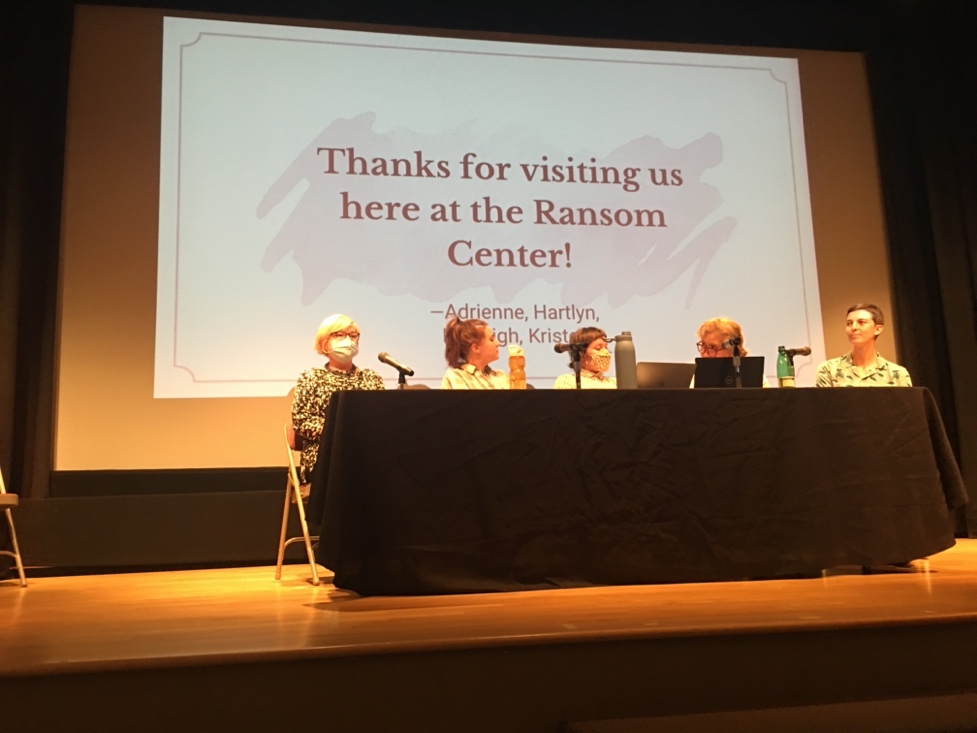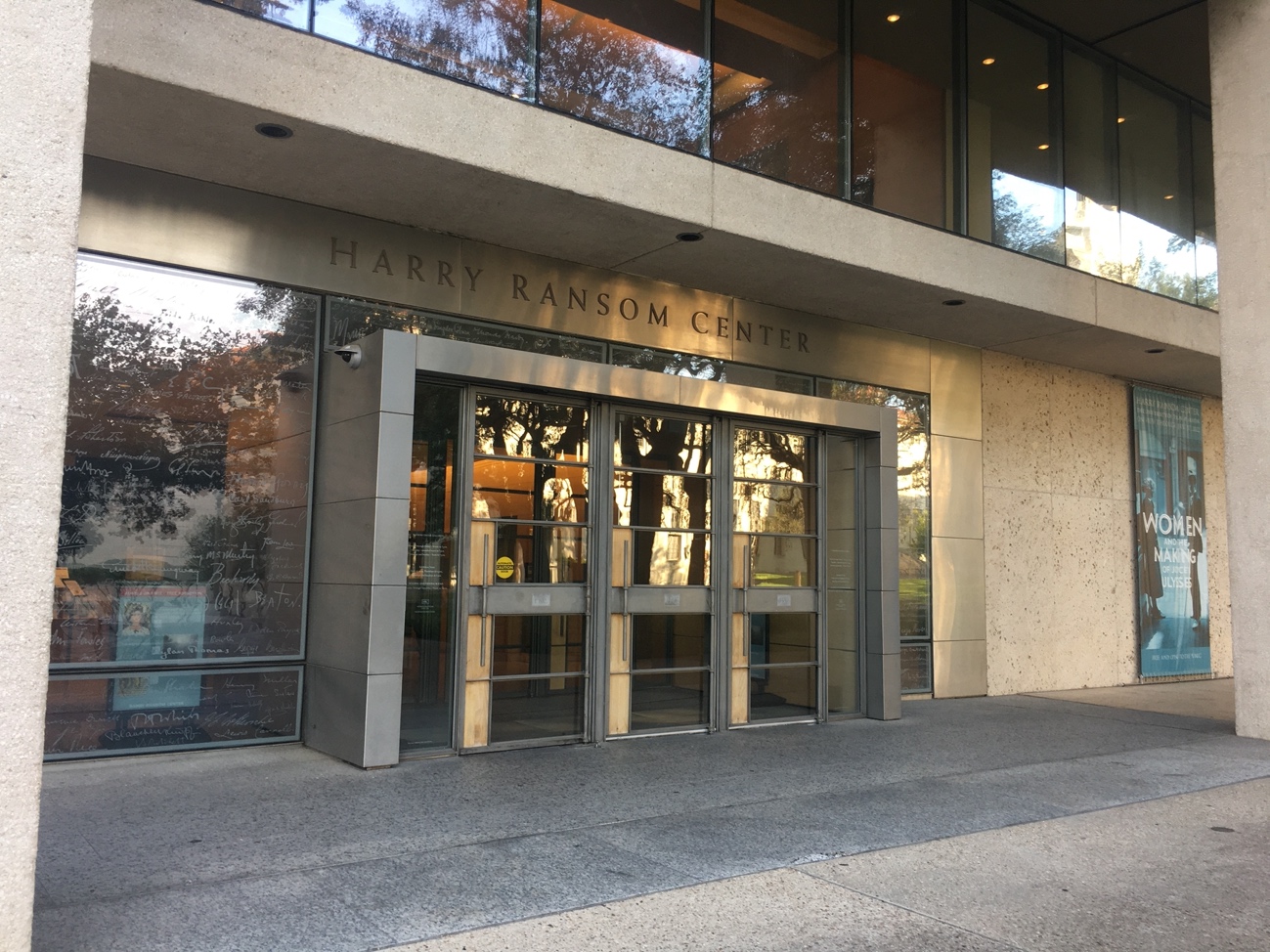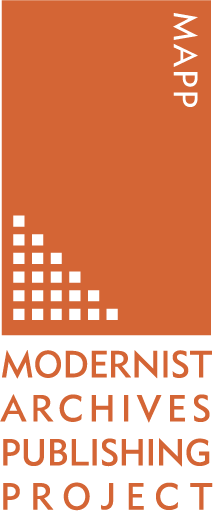During the month of June, as Mapp's project archivist I was given the unique opportunity to visit and work with staff at the Harry Ransom Centre (HRC) in Texas, this is quite a rare experience for an archivist; we often work behind the scenes, travelling about in time, rather than locations!
We at MAPP are a collaborative team and it's very important for us to share and exchange knowledge between our partner institutions, and as a part of the project, the University of Reading had the chance to exchange a member of staff with the Harry Ransom Centre at the University of Texas, and so I journeyed across the pond.
My visit begins with the MAPP conference, our project manager has written two excellent blog posts which you can catch up with here: Mapp At The Harry Ransom Center In Austin, Texas (Day 1) and MAPP at the Harry Ransom Center in Austin, Texas (Day 2) . The conference was the first time I met most of the MAPP team in person, and my first time presenting at an in-person event. I also had the chance to talk through the new transcription stream of MAPP and our work with volunteers.

The conference and MAPP's visit to Texas coincided with the Ransom Centre's James Joyce exhibition, which focused largely on the women that helped publish Ulysses - though I did discover through the exhibit that Virginia Woolf turned down Ulysses (owing to its length). It was fascinating for me to see Virginia Woolf as a businesswoman, making decisions in the very early years of the Hogarth Press, I have not yet seen this side of her in our collections here at Reading University. Joyce's Ulysses turned 100 in February 2022, which meant I had the chance to witness various events during my time here, including one in honour of Bloomsday, an annual celebration of Joyce's life. Learning more about the efforts that went into publishing Ulysses, and of course, realizing the hidden work of the women in publishing Joyce's work, certainly enhanced my modernist education. It was a great extension to all I have learned whilst working on MAPP. I also witnessed the efforts of staff, not only planning the exhibition (almost entirely virtually due to Covid interruptions) but also all the events planned around it and caught a behind-the-scenes glance at some 3d modelling of the exhibition space!

Finding Virginia Woolf's rejection letter in the exhibit also piqued my interest in spending some time in the reading room (as a reader for a change) to seek out more of her letters. I found a couple, one where she speaks with John Lehmann about his reading of the Waves for the first time, and a letter where she congratulates William Plomer on his work Sado. It was a great pleasure to discover some of Virginia’s words and though within them she protests that she did not enjoy writing letters, I can see that she did. She has often felt hidden to me in the Hogarth Press archive, so I wanted to read more of her own accounts. I enjoyed finding connections in her letters with authors and individuals I have come to know through MAPP. It was also my opportunity to see differences in procedures for the retrieval of materials viewed in the HRC's reading room, a process I also got to shadow.
After using the reading room as a reader, or patron (as they call archive users at the HRC) I spent time working with the research assistants who work with MAPP material in the HRC. During this time, they and other members of staff took me on various tours behind the scenes, where they introduced me to more of their collections and treasures: Gone With the Wind artwork, Sir Arthur Conan Doyle's Ouija board, a room full of hanging wooden puppets and a wooden door signed by various authors. Though there is much, much more.
The scale of the HRC means it would be impossible to explore it all in a month, one staff member informed me it was genuinely possible to get lost in amongst the stacks, which, to me, felt like a never-ending maze of books. The HRC is indeed vast, as it states on its website: "The collections include nearly 1 million books, more than 42 million manuscripts, 5 million photographs, and 100,000 works of art".

For me, it was also a means to visit other heritage professionals, including several archivists who oversee various procedures and functions, to name just a few: a digital archivist, an archivist in charge of cataloguing, and a fellow project archivist. They all took the time to introduce me to their roles. I was also given tours of the centre’s digitisation studio and conservation department, talking to staff about preservation and collection care, so I very briefly discovered just some of the work of the many professionals that care for, advocate for, and promote the HRC collections. One particular task I was able to be actively involved with was a 'collection inspection' where I was able to help in the beginnings of a transfer of a new collection into the HRC before it is accessioned (more formally accepted into the archives).
My time here was just a snapshot (and this has been a whistle-stop blog) and although jam-packed, I left wishing I could have done more as there was so much more to see!
I am thankful to all the staff that welcomed me and gave up so much of their time.
Next year we will be welcoming a member of staff form the HRC to the University of Reading, and we'll be sure to keep you posted.




